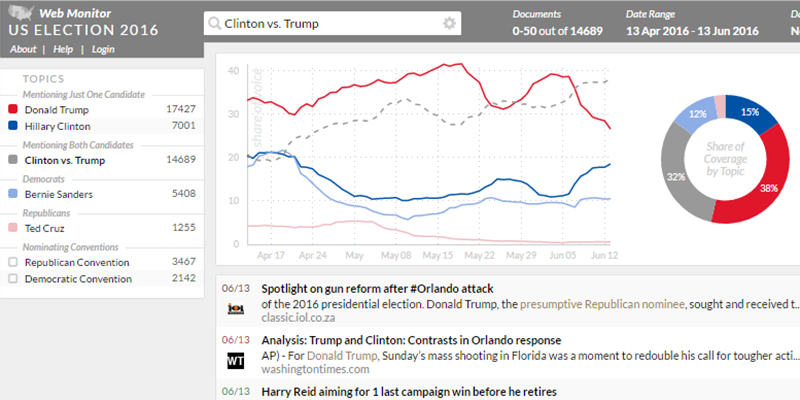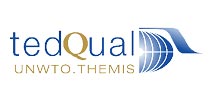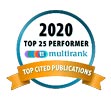Clinton vs. Trump – The Virtual Road to the White House
June 14, 2016
MU's US Election 2016 Web Monitor provides Visual Analytics Tools to Track Online Perceptions of the Presidential Candidates
Five months before the US Presidential Election 2016 and in time for the upcoming Democratic and Republican conventions, a team of European researchers led by MODUL University Vienna has just released a novel Web intelligence platform to track the public dialog and the candidates’ performance on the campaign trail. Real-time analyses of online coverage based on MU’S webLyzard Web intelligence platform reveal opinion leaders, shed light on how events impact the coverage, and compare the perceptions of social media users with the editorial position of news media, companies and NGOs.
The US Presidential Election 2016 is remarkable in many ways. Slightly more than a month before the Democratic and Republican National Conventions, neither party has managed to put its entire weight behind their respective candidate. It took until June for Hillary Clinton to gather enough votes in the primary, while her opponent Donald Trump is one of the most polarizing candidates ever. With media attention on the rise, many observers wonder whether we will witness genuine political debate in the months to come, or if entertainment value will overshadow rational arguments. How is this unusual presidential race perceived by citizens and various stakeholder groups? The US Election 2016 Web Monitor, publicly available at www.weblyzard.com/election2016, provides answers to this question.
Trends that Shape Social Perceptions
Project spokesperson, Prof Arno Scharl from MODUL University Vienna’s Department of New Media Technology, outlines how the interactive Web application gives a unique view of the diverging perceptions of different stakeholder groups. “There have been many attempts at monitoring the campaign performance of presidential candidates, but most of them focus on public opinion polls or media monitoring solutions limited to simple statistical representations,” he said. “Our Web intelligence platform, by contrast, provides automated knowledge extraction and visual data exploration along multiple context dimensions, in real time and embedded into a powerful dashboard”. Officially launching the Web platform with an invited talk hosted by the US Embassy in Vienna, Prof Scharl describes the underlying method and presented a range of visualizations that allow a closer examination of the gathered data – in order to better understand social perceptions of the candidates, and identify events that shape these perceptions.
Real-Time Intelligence from Online Sources
The project analyses user-generated content from social media, articles of international news media, and the online publications of NGOs and Fortune 1000 companies. Processing these content streams yields more than 8 million relevant documents per month. Automated knowledge extraction services classify and enrich the collected documents. Sentiment, for example, is measured by associating these references with positive and negative expressions. Keywords, grouped by political party or geographic region, reflect events and emerging stories associated with the candidates.
The US Election 2016 Web Monitor is jointly pursued by researchers of MODUL University Vienna, webLyzard technology, Vienna University of Economics and Business and HTW Chur in Switzerland, who have a long history of successful collaboration. A monitoring application for the US Election 2008 won the "Online Communities, Web 2.0 and Social Networks" category of the Austrian National Award for Multimedia and e-Business.





